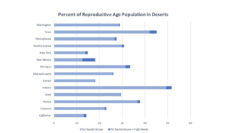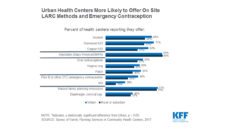With the recent overturning of Roe v Wade by the Supreme Court, contraceptive access has never felt more important. The pill, condoms, and IUDs come to mind when we talk about contraception. We rarely talk about vasectomy, one of the safest and most effective pregnancy prevention options. Vasectomy, cutting off the supply of sperm to prevent fertilization, is a safe and effective outpatient surgical procedure.
Vasectomies are 99% effective, and do not affect sex or sex drive. Performed under local anesthetic, it takes about 15 minutes, followed by a few days of discomfort which can be managed with over-the-counter pain medicine. Yet only 500,000 men have vasectomies every year in the U.S. compared to the 700,000 more invasive female sterilizations per year. While this gender difference may stem from social views of vasectomy and male sexuality, the gap may be the result of poor medical coverage for male reproductive health.
Brian Nguyen and colleagues surveyed staff at 200 publicly funded clinics in California to assess male sexual and reproductive services. Only 4.9% of the clinics surveyed offered vasectomy. Rural clinics and those not associated with Planned Parenthood were the least likely to offer the procedure.
Among the seven clinics that did offer vasectomies, five schedule the procedures for only one day a month. The low number of clinics performing the procedure and limited availability reflects national trends. Publicly funded clinics providing vasectomy services decreased from 25% to 7% between 2003 and 2010 nationwide. While the study does not specify the distance between these clinics, California is almost 163,700 square miles. With so few clinics providing vasectomy services, residents likely must travel great distances for the procedure.
Vasectomies are also not included in contraception coverage through state and federal insurance plans. These are the plans which cover state workers and low income or disabled Medicaid recipients. California offers family planning services through state programs, such as FPACT, which will reimburse patients for the cost of contraception including vasectomy. Yet at the time of the study, only one provider partnered with FPACT performed vasectomies. The researchers suggest that the government reimbursement may not provide a strong enough incentive to attract more vasectomy providers.
In a time where contraceptive rights are at risk in the U.S., expanding contraceptive access for both men and women may be protective. This year, Californians will vote on the Contraceptive Equity Act of 2022. If it passes, state insurance plans cannot impose out-of-pocket costs for contraception, including vasectomy. This bill is estimated to increase the number of vasectomies performed by 252 in the first year. The damage from restricting abortion access may be lessened by increasing contraceptive access, but new policies will be necessary to grow the number of vasectomies nationwide.
Illustration via Getty Images














